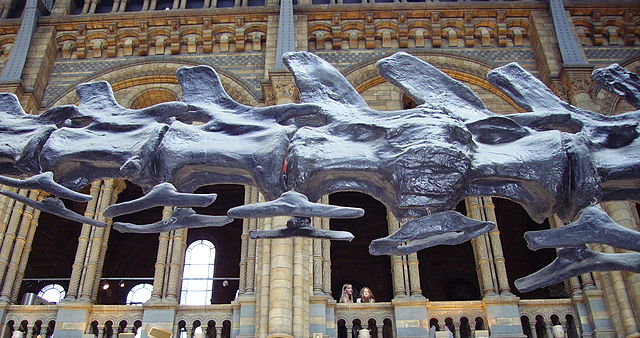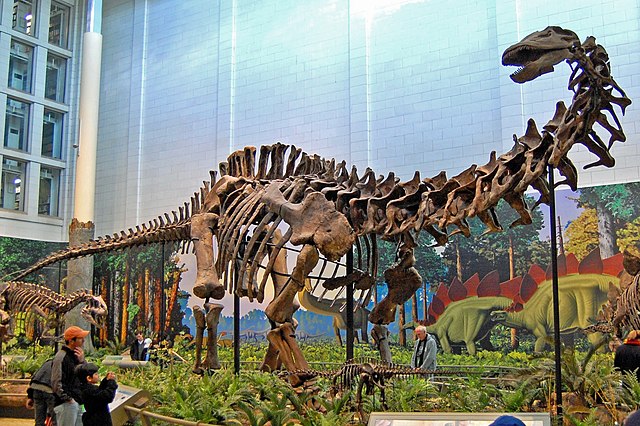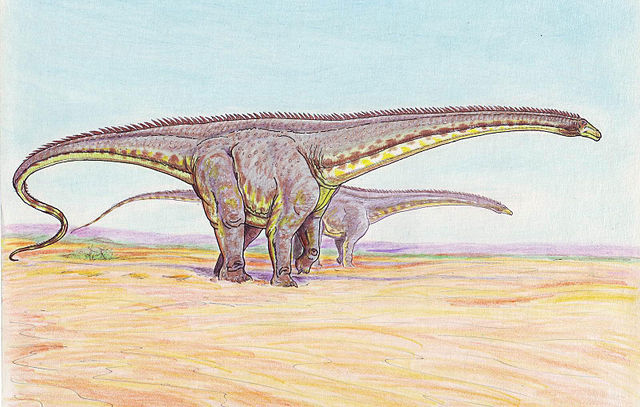Diplodocus was a genus of diplodocid sauropod dinosaurs, whose fossils were first discovered in 1877 by S. W. Williston. The generic name, coined by Othniel Charles Marsh in 1878, is a Neo-Latin term derived from Greek διπλός (diplos) "double" and δοκός (dokos) "beam", in reference to the double-beamed chevron bones located in the underside of the tail, which were then considered unique.
Diplodocus
Caudal vertebrae of D. carnegii showing the double-beamed chevron bones to which the genus name refers, Natural History Museum, London
Reconstruction of D. carnegii with horizontal neck, flexible whip tail, keratinous spines and nostrils low on the snout
Barnum Brown (left) and Henry Osborn (right) excavating a femur of Diplodocus hallorum (AMNH 223), 1897.
Diplodocids, or members of the family Diplodocidae, are a group of sauropod dinosaurs. The family includes some of the longest creatures ever to walk the Earth, including Diplodocus and Supersaurus, some of which may have reached lengths of up to 42 metres (138 ft).
Image: Louisae
Image: CM Diplodocus
Diplodocus, depicted with spines limited to the mid-line of the back
Diplodocid heads have historically been restored in various ways: a) skull, b) classic rendering of the head with nostrils on top, c) with speculative trunk, d) modern depiction with nostrils low on the snout and a possible resonating chamber







